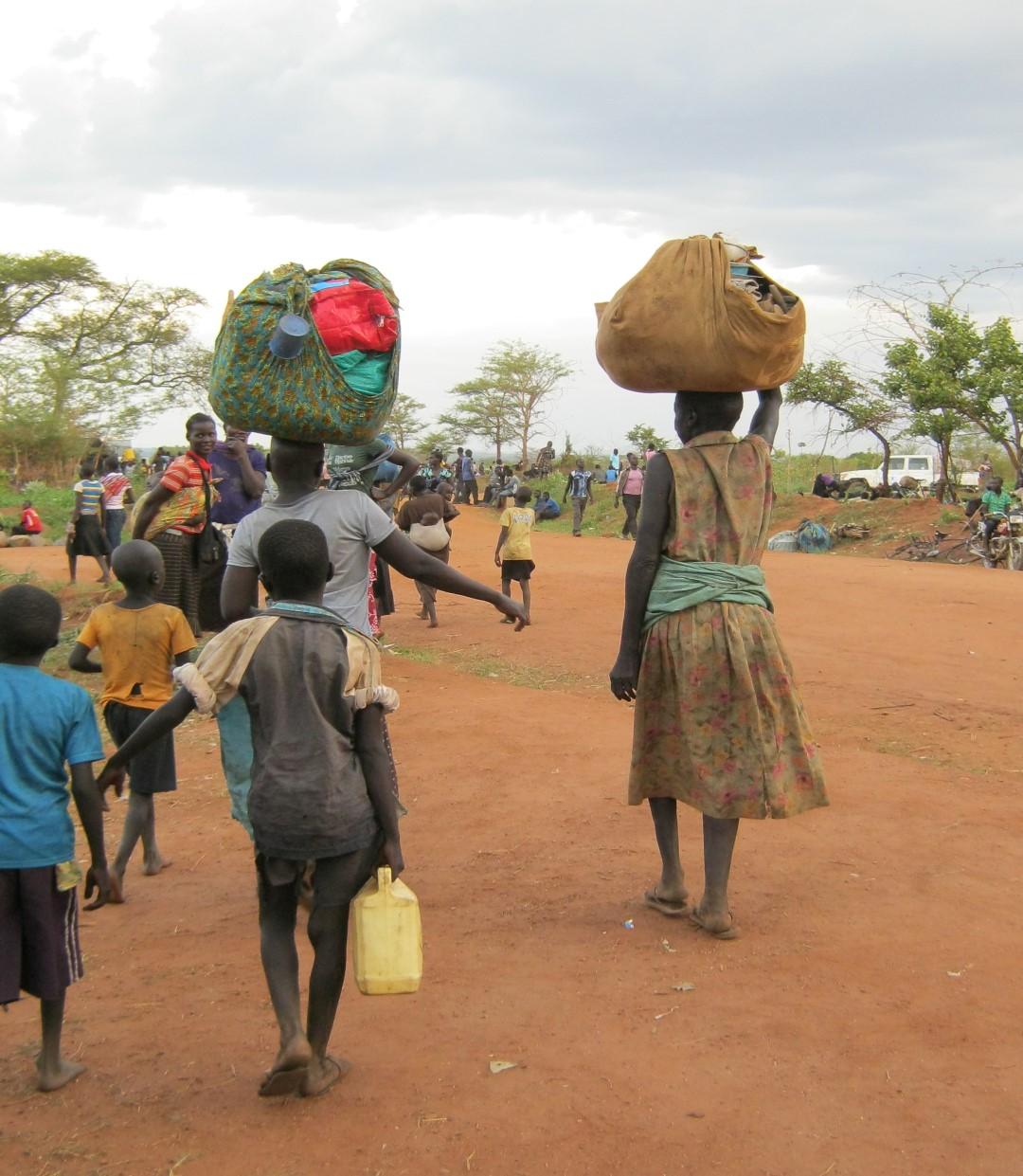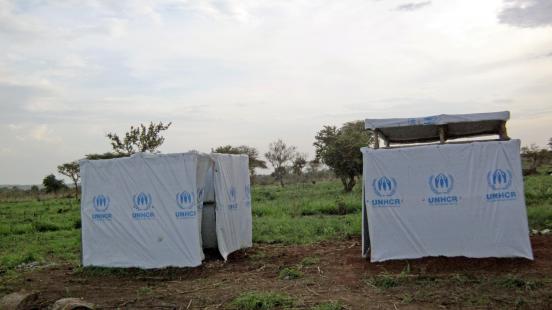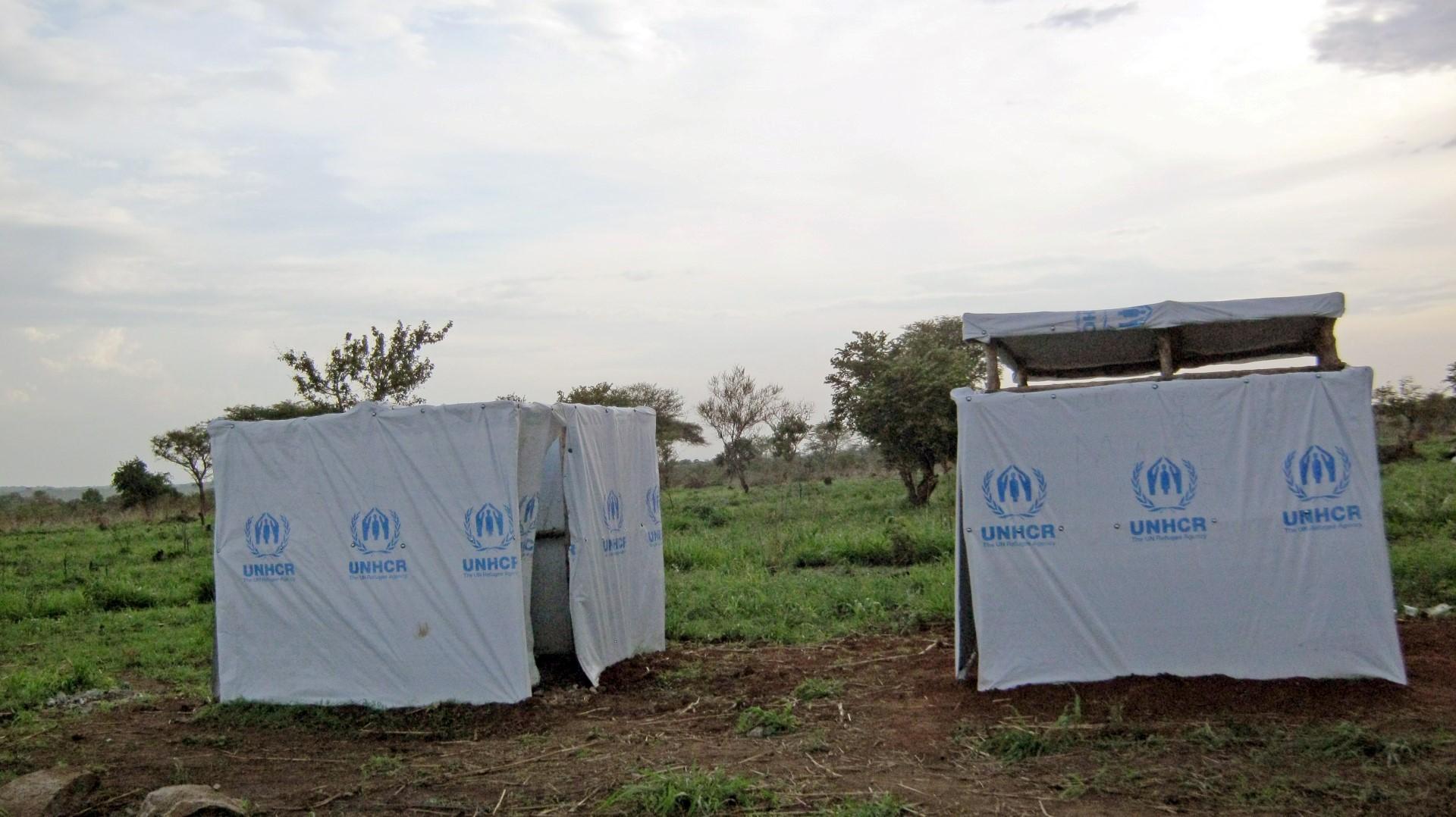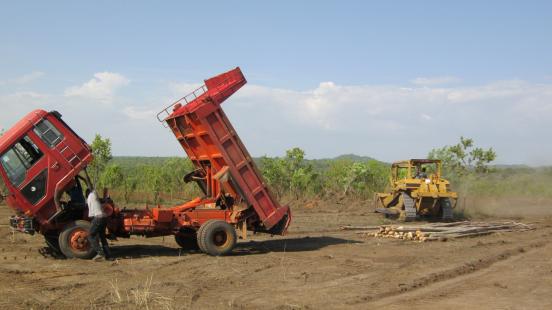Unexpected refugees pushing Lamwo to breaking point

It’s filled to the edge. Thousands of South Sudanese refugees are scattered everywhere at the Ngomoromo border collection point in Lamwo district, Northern Uganda. As some have sought shelter in the communal temporary housings, others have camped in an open field, while the rest under trees. This follows an abrupt massive influx of South Sudanese to Lamwo district due to a shift of conflict to the Eastern Equatorial region.
''We woke up to 500 refugees at Ngomoromo-an LWF managed collection point in Lamwo and by 2pm, the number had shot up to over 2,000 on 4/4/2017. As of now, we have more than 3,000 of them on ground,'' William Onen, LWF Subprogram Manager in Lamwo district.
Onen explains that his team is working tirelessly to respond to the rapid emergency. This is happening at a time when LWF, in partnership with OPM, UNHCR and other humanitarian organizations are setting up a new settlement at Palabek in Lamwo with a standard capacity of 40,000 refugees. Left with almost no time to prepare the settlement, the humanitarian response team on ground has resorted to working 24 hours a day, in shifts. This, the team is doing to get the reception centre, communal shelters and washrooms ready for the resettlement of refugees as soon as possible.
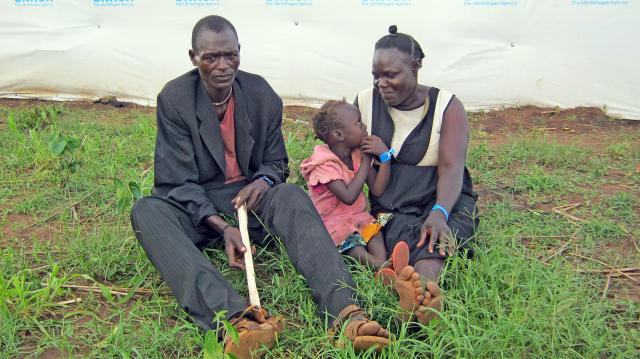
Refugees speak out
Juma Odoo, 38, who left his house in Pajok on fire, waits for assistance at the congested collection point with his family. He looks weak and says he can hardly stand for five minutes or even walk due to fatigue and his dwindling health. Odoo has tuberculosis and he walked 45 kilometres fom Pajok in the Eastern Equatorial region to Uganda, with his family without any food or water. ‘’I am tired, hungry and very ill. I haven’t taken my medicines since Monday when I arrived because I left them home,’’ teary Odoo expresses his concerns. ‘’I have survived war but my hope of surviving tuberculosis is on a thin line due to lack of medication,’’
Just like Odoo, 28-year-old Jackson Saaima complains of failing health. Her eyes are yellowish and teary that she can hardly use her sense of sight. However, the mother of one has not received any medical relief and is desperately waiting to be attended too.
Other than health, food is another demand they have not yet received. Omal Atanasio looks pale and weak, but he says his health is okay. ‘’Its not that I am sick, I am just hungry. I haven’t had food in three days ever since I started my journey away from home,’’ Omal is just one of the thousands complaining of hunger at Ngomoromo collection point.

Influx in details
Of the roughly 3 million South Sudanese refugees worldwide, Uganda currently hosts 800,000 of them, yet more continue to arrive. The influx is a result of a conflict between the government and opposition forces, as well as famine that hit the world's youngest country early this year. “Uganda has continued to maintain open borders...But this unprecedented mass influx is placing enormous strain on our public services and local infrastructure,” said Ruhakana Rugunda, Uganda’s prime minister.
Just like Rugunda, Filippo Grandi, the UN’s high commissioner for refugees, said Uganda is now “at breaking point”.






